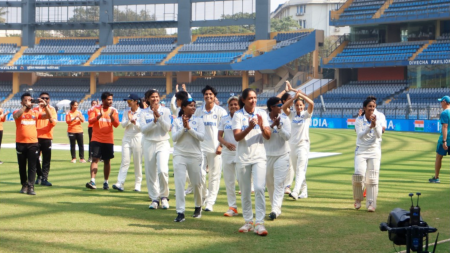AFC Asian Cup: India’s strong defensive show no match for Australia
Sunil Chhetri resolutely guarded the near post. His strike partner Manvir Singh was flying in to intercept a dangerous cross and head it away from the India goal. Sandesh Jhingan had a bandage wrapped on his forehead and took more blows on the body than Pujara did in that Gabba Test.
For 45 minutes, India’s players formed a blue-coloured wall in front of their goal and blocked everything that Australia threw at them. The Socceroos had 14 attempts on goal; the Blue Tigers only three; Australia enjoyed 72 per cent possession and earned 12 corners. But for all their slick passes, sneaky runs, delightful crosses and through balls, Australia couldn’t get past India’s last-ditch defending.

Yet, at half-time, when the two teams walked back with the scores – contrary to most expectations – level at 0-0, the questions really were – how long would it take for Australia to open the scoring; and would India be able to keep up the same focus for another 45 minutes?
Blood and sweat. We gave it our all. But it wasn't enough to get something from our #AsianCup2023 opener.
On to the next one in five days' time 🇮🇳#AUSvIND ⚔️ #BlueTigers 🐯 #IndianFootball ⚽ pic.twitter.com/Cptx158KNp
— Indian Football Team (@IndianFootball) January 13, 2024
It did not take long to get answers: India could not maintain their focus and Australia needed just five minutes in the second half to break the Indian wall.
Jackson Irvine latched on to a mistake made by goalkeeper Gurpreet Singh Sandhu – usually the safest pair of hands – to open the scoring. That settled the nerves as Australia beat India 2-0 in their opening match of the AFC Asian Cup in Doha.
The win puts Australia in the driver’s seat in Group B, which also has Syria and Uzbekistan. India, on the other hand, will have to surpass all expectations to make it to the knockout stages.
India were not expected to win on Saturday. But at least they did not embarrass themselves. Australia, 24th in the world, were tipped to roll over their opponents ranked 101. But they at least got the job done.
India were without some of their key players – Sahal Abdul Samad, recovering from an injury, did not make it even to the bench, as expected, and the absence of Jeakson Singh meant Deepak Tangri made his international debut.
Vibes at the Australia 🇦🇺 vs India 🇮🇳 game 🔥 #AsianCup2023 #HayyaAsia pic.twitter.com/rELLdBM507
— AFC Asian Cup Qatar 2023 (@Qatar2023en) January 13, 2024
More than half of Australia’s players started in the 2022 World Cup Round of 16 match at the same stadium against Argentina, including their captain and goalkeeper Mat Ryan, who recovered from a cheekbone injury in time but was virtually a spectator for 90 minutes.
Unexpectedly, the match followed the predicted pattern. Australia parked themselves around India’s box. And all 11 Indian players retreated towards their goal, guarding it as if their lives depended on it.
It wasn’t too different from the last time these two teams played each other, in the 2011 Asian Cup. Australia had won that match 4-0. In that sense, Saturday’s scoreline will be viewed as ‘respectable’ for India. But it also showed that the gulf in class between India and one of Asia’s best teams hasn’t narrowed much in the last 13 years.
View this post on InstagramA post shared by #AsianCup2023 (@afcasiancup)
The only times India looked threatening going forward was when Lallianzuala Chhangte got the ball on the flanks. His speed made up for the physical disadvantage India had in the midfield – Australia’s shortest player was as big as India’s tallest.
India’s attacking plan was to exploit Chhangte’s pace to counterattack and hope it led to something. It nearly did once, when a cross flew over the Australian defenders and landed on Chhetri’s head. The India captain, however, could not hit the target.
It was the only time India came close to scoring. For the rest of the period, they were busy protecting their goal.
One could sense frustration creeping in the Australian dugout, initially because of a lack of cohesion and later for not being able to put the ball into the net, even though nearly all their attackers had a go.
It was only after Sandhu’s mistake, which Irvine capitalised on, that Australia started to breathe easy. Jordan Bos scored the second 40 seconds after coming off the bench – second fastest goal by a substitute in the Asian Cup, as per Opta – and put the match to bed.
It wasn’t a thrashing as many predicted but there weren’t many gains, too, for India from this match. They have five days to recover and prepare for the match against Uzbekistan, well aware that another defeat could mean a second-straight group-stage exit in the continental championship.
Disclaimer: The copyright of this article belongs to the original author. Reposting this article is solely for the purpose of information dissemination and does not constitute any investment advice. If there is any infringement, please contact us immediately. We will make corrections or deletions as necessary. Thank you.





